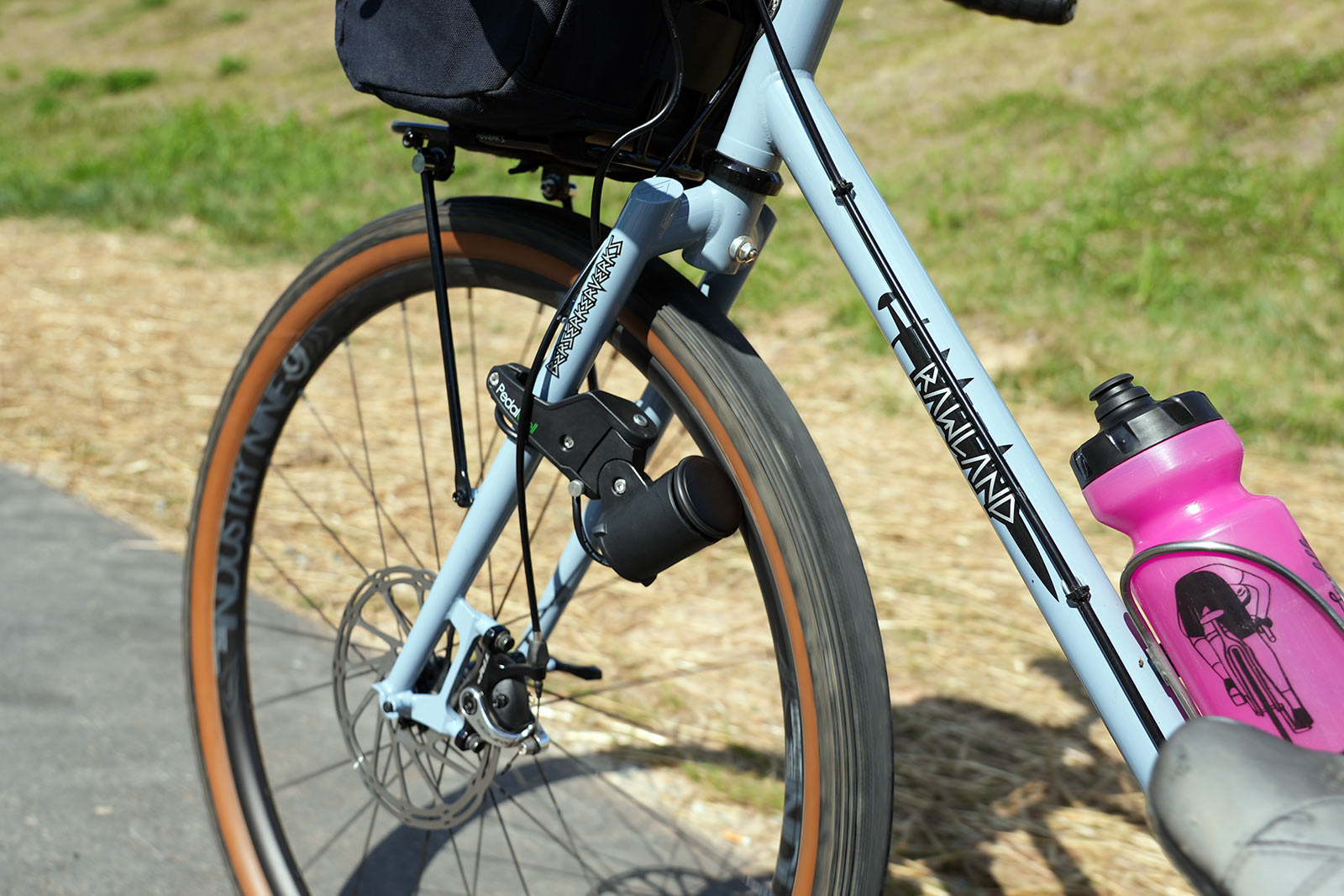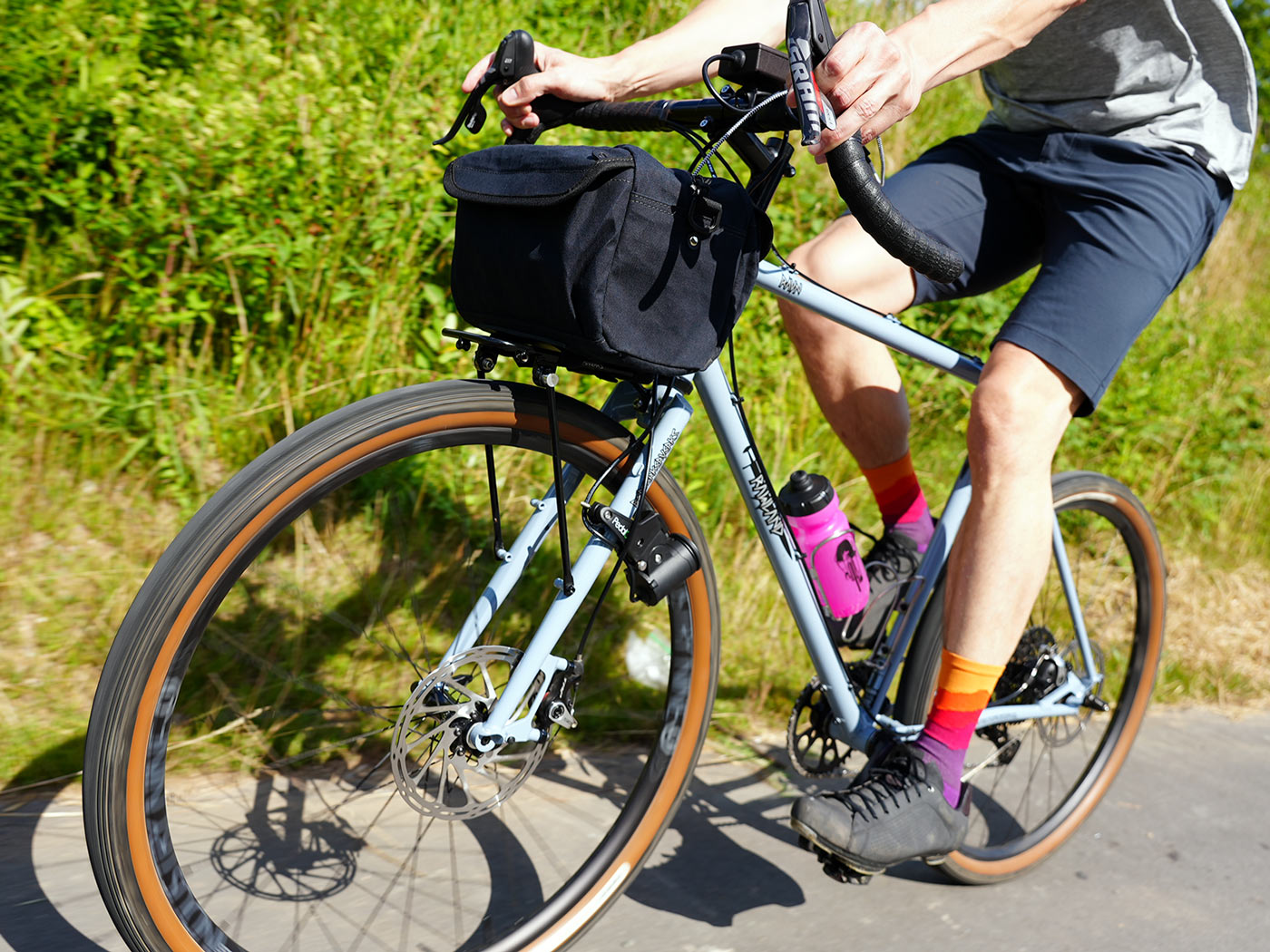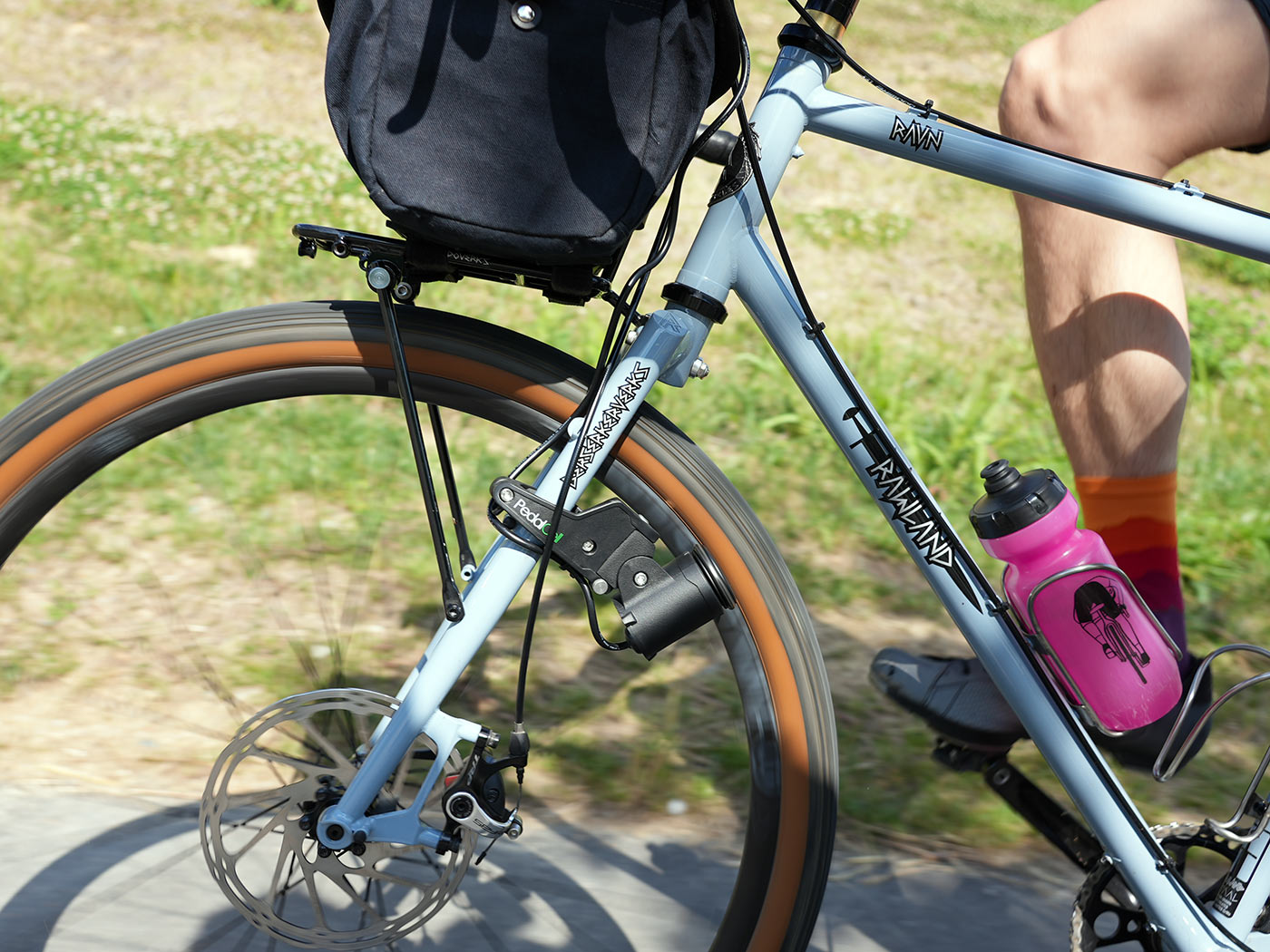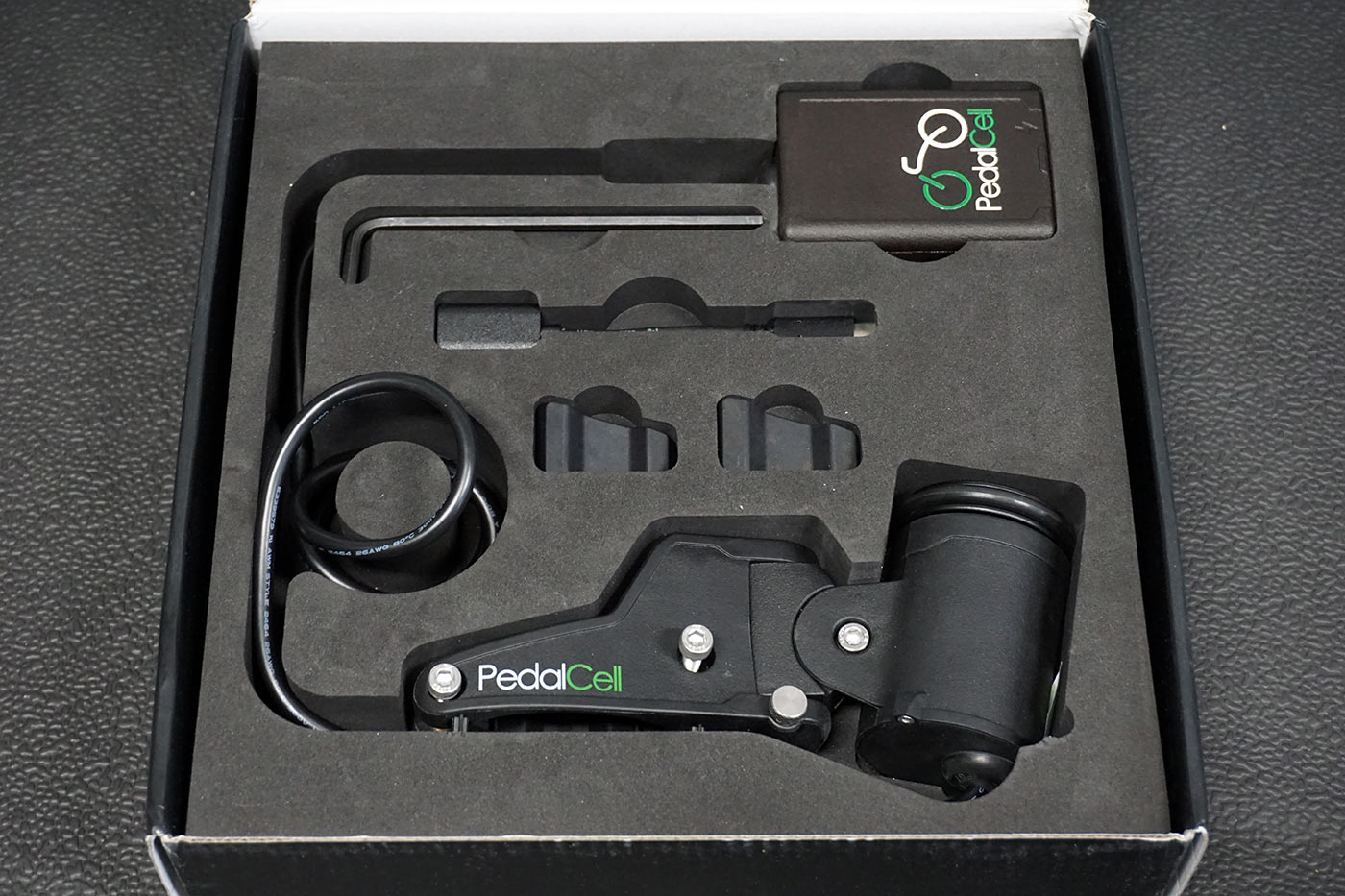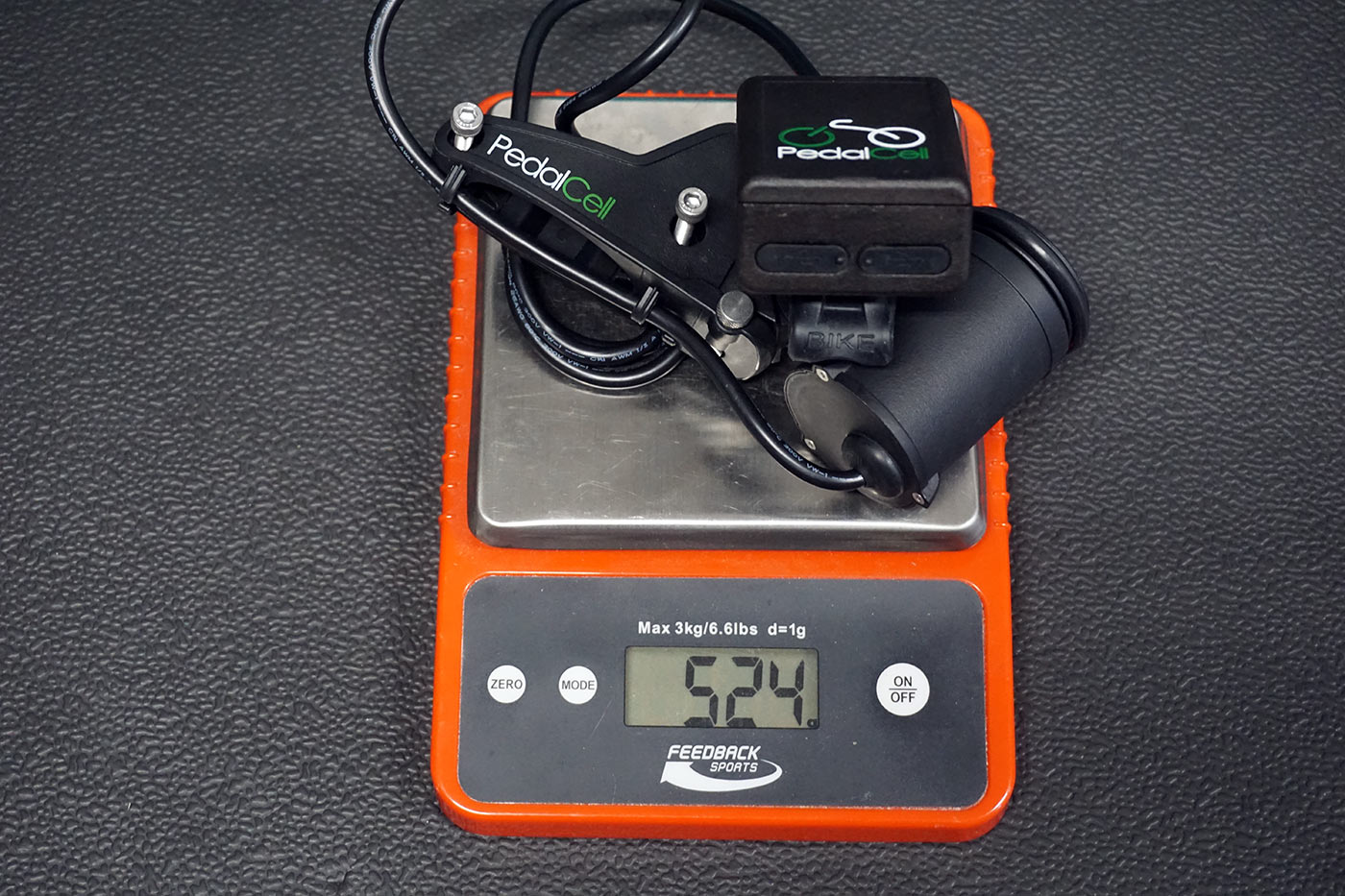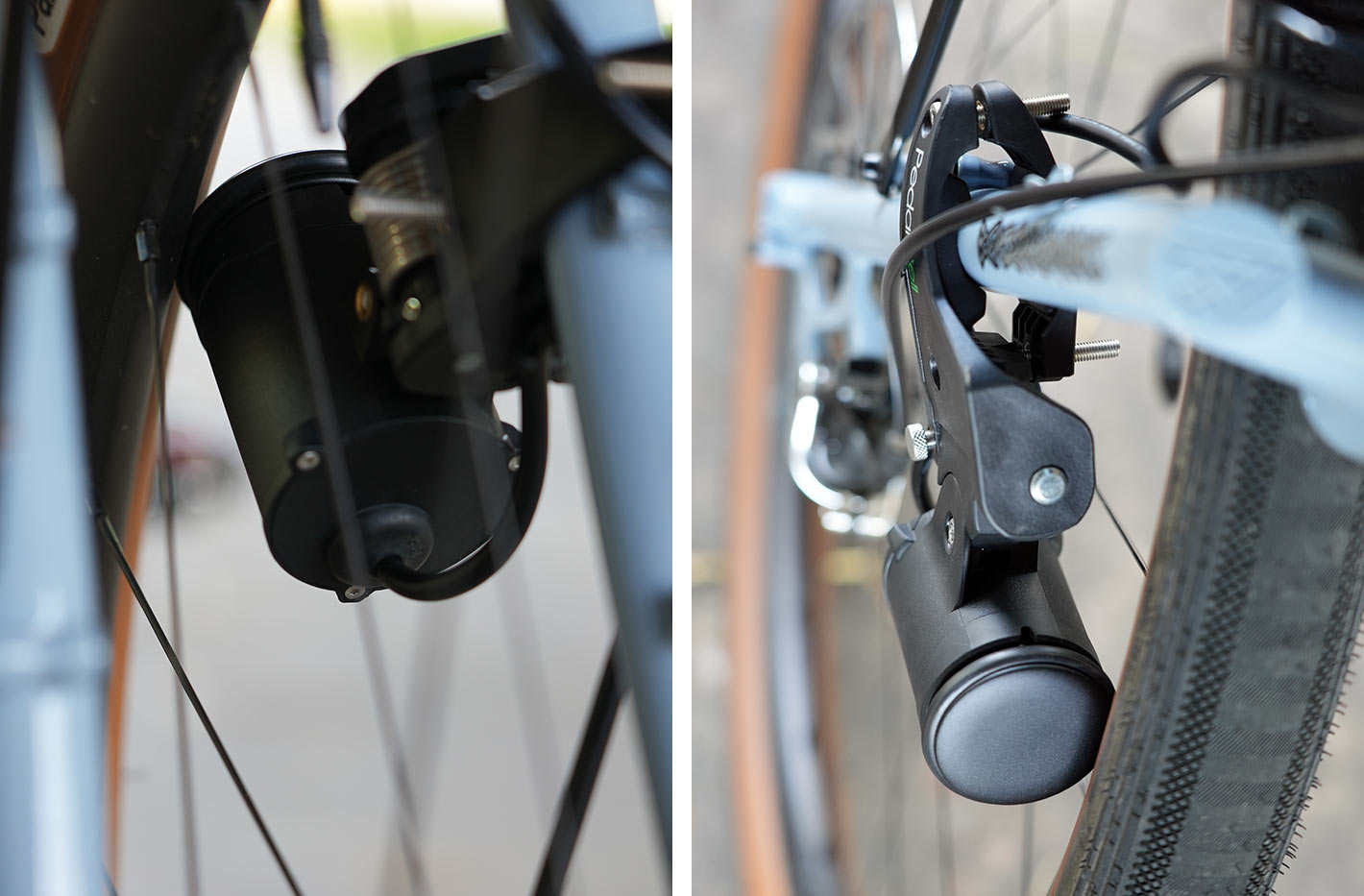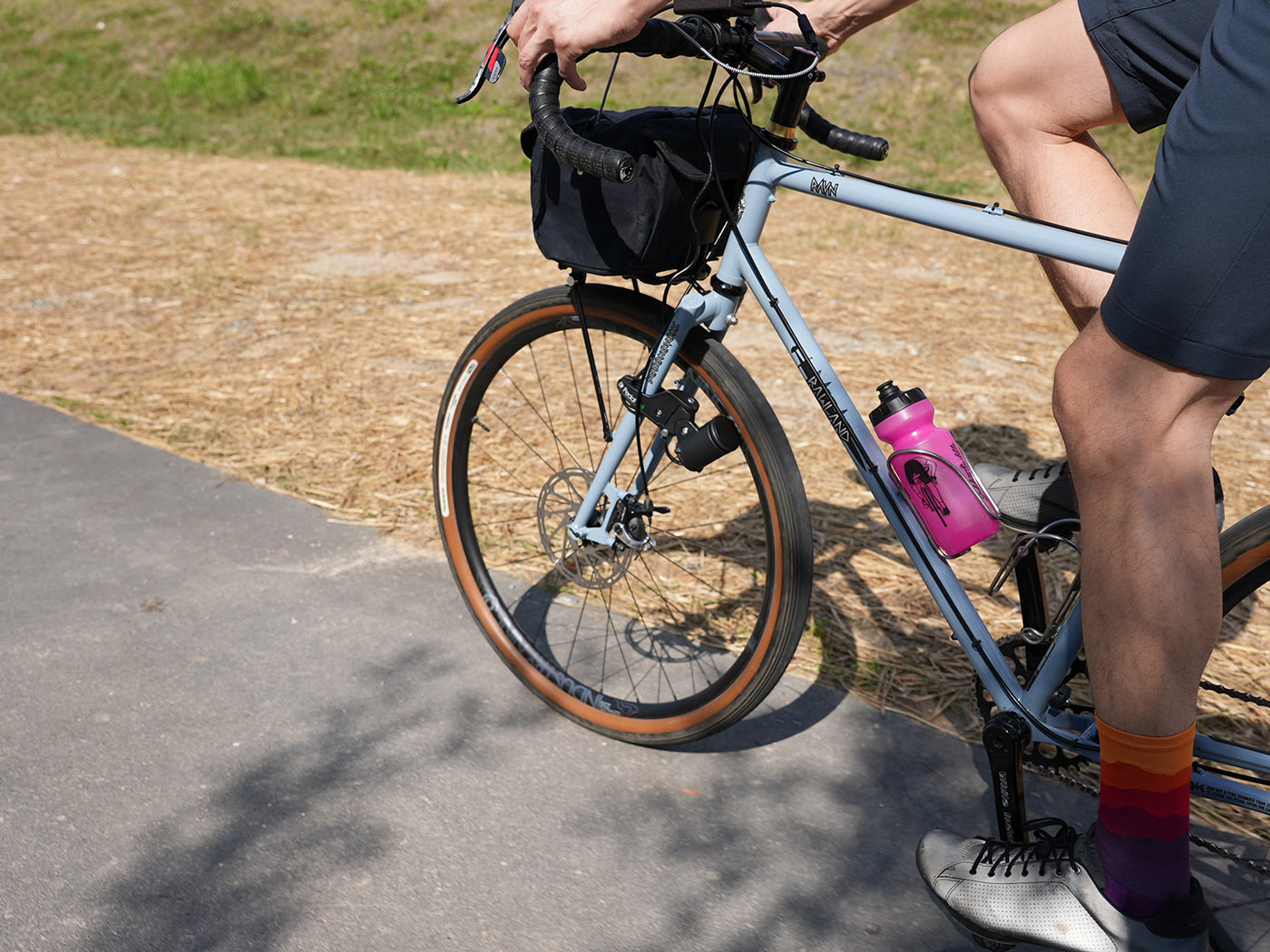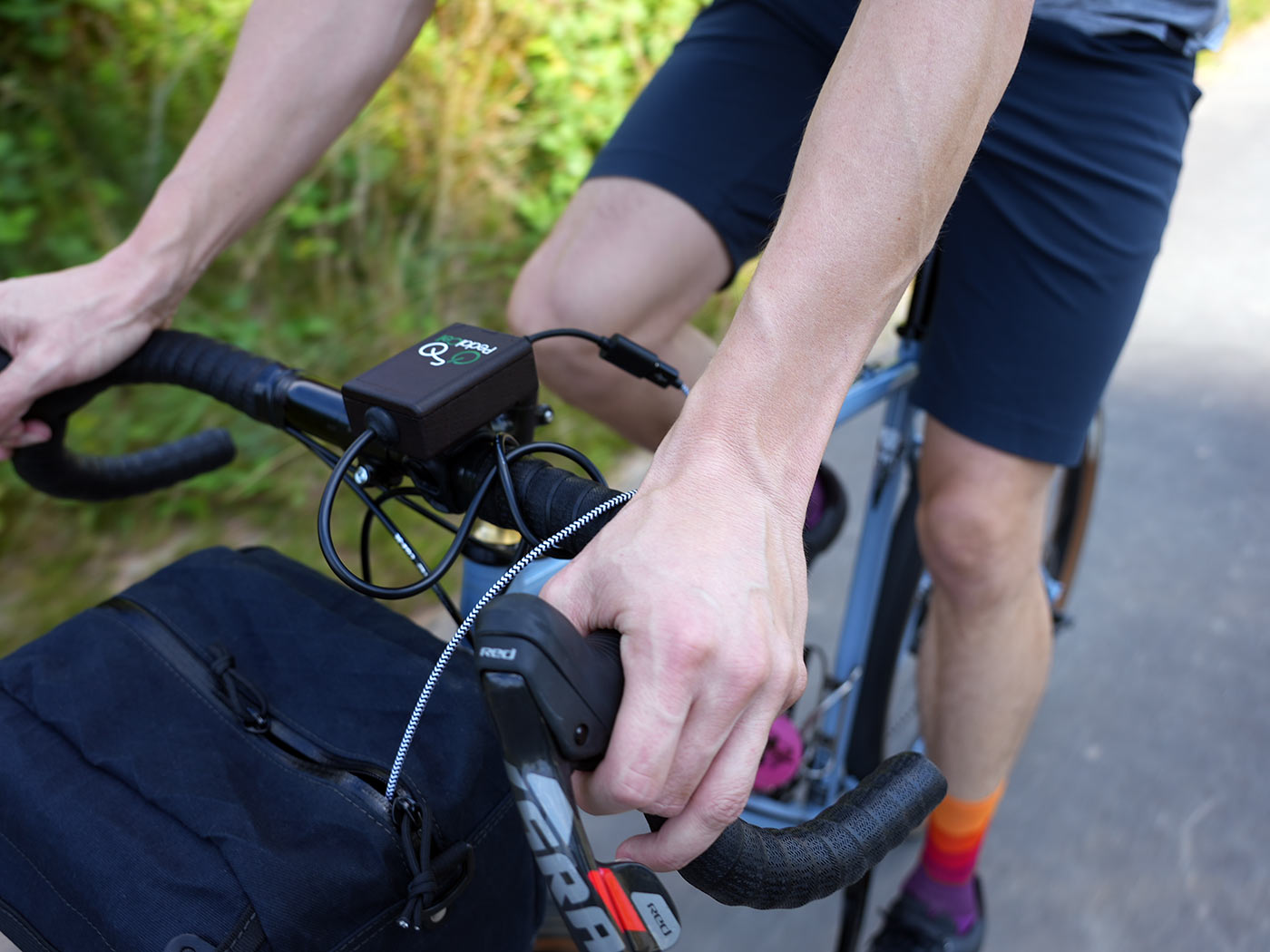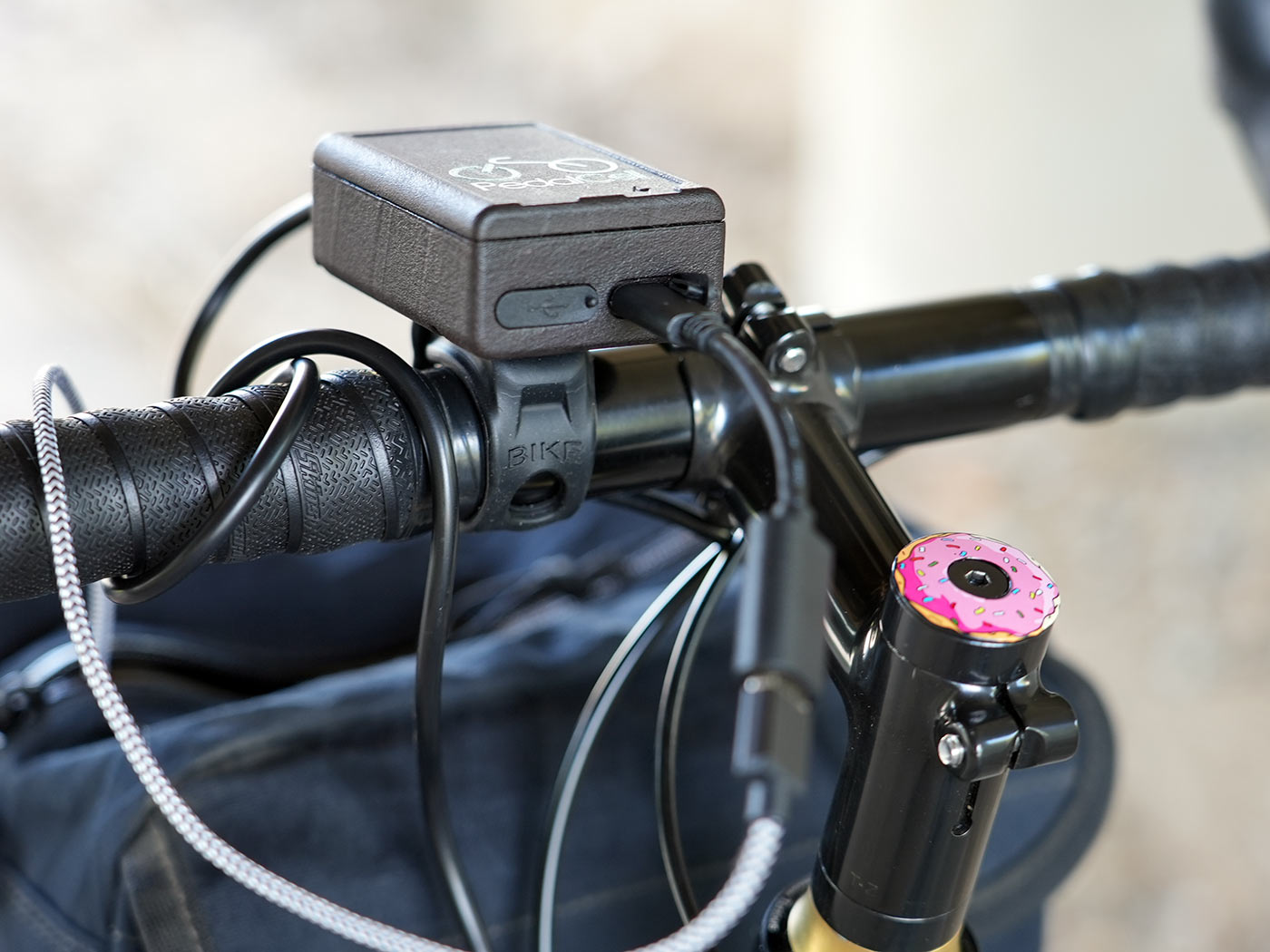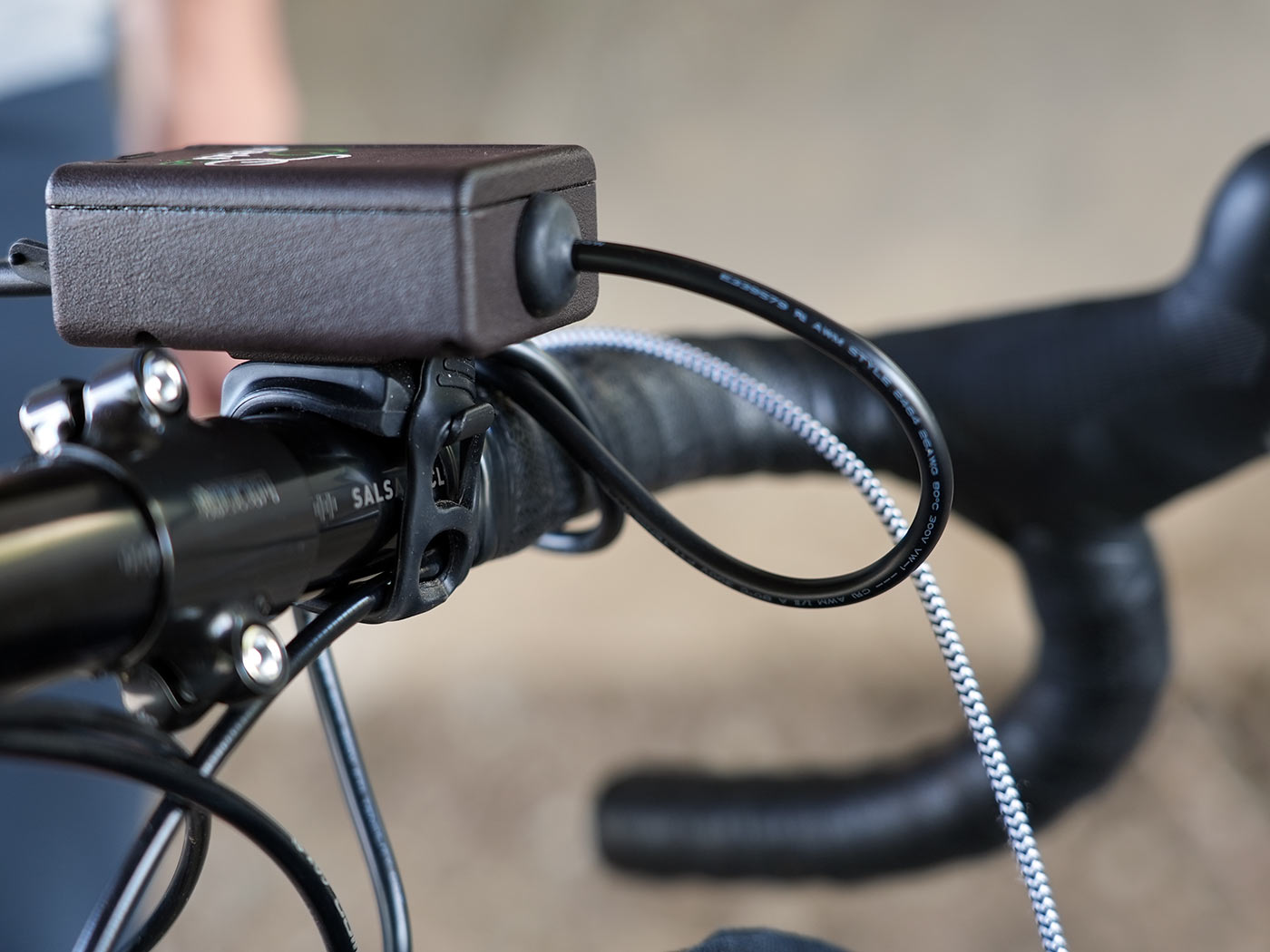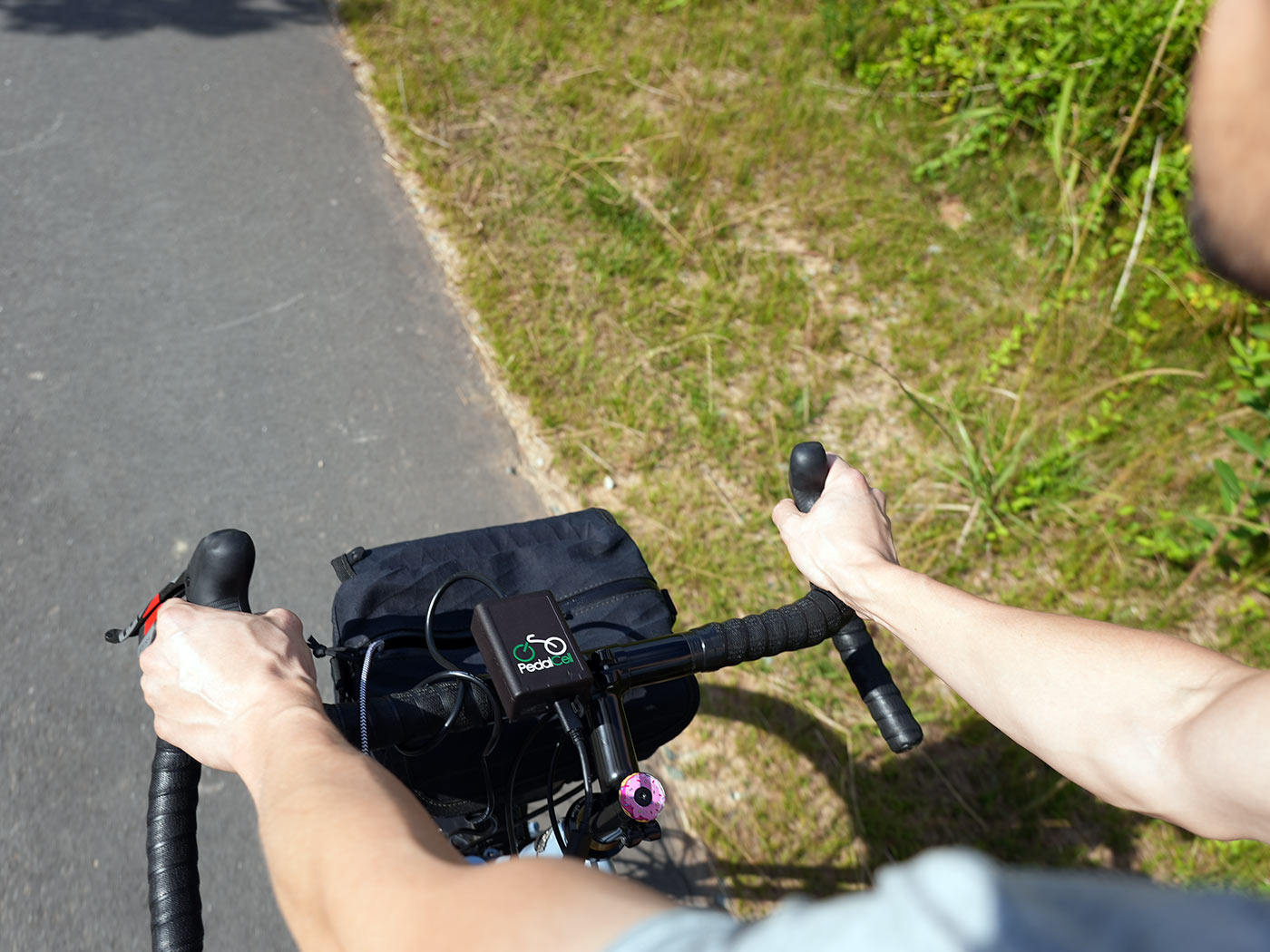The PedalCell dynamo attaches to your fork and rolls against your rim to create electricity, turning out enough juice to charge your phone and power lights far longer than a typical hub dynamo.
We put it to the test to see how well it could top things off, and rode alongside a friend with a hub dynamo to see how it compared. Overall, it impressed, but there are a few things you should know before adding it to your bike…
Why add the PedalCell dynamo?
The pandemic, which disrupted the flow of goods (read: bike parts) around the world made me a more minimalist cyclist. Unable to get my hands on wheels, frames, groupsets, etc. for a mountain bike, a touring bike, a gravel bike, or a road bike, I decided to use the one complete bike I owned for a bit of everything.
Now, rides to the brewery, post-work rides, and longer weekend rides have something in common: I will, at some point, require power. Power to recharge my lights affected by the wintery temperatures (or because I’m slow and rode partly through the night). Power to charge my phone and keep Strava running. Power to charge all kinds of batteries.
PedalCell is to your old bottle dynamo what SpaceX is to the Wright Brothers – they’re vaguely related, but one will take you much, much farther.
Box contents & actual weights
The standard PedalCell kit sells for $299 and includes everything shown and tested here. The ports on the power box are both USB-C, but it includes one USB-C-to-A adapter cable. All mounting hardware and adapters are included to make it fit most bikes right out of the box.
Actual weight for the full kit with everything that would go on the bike is 524g.
Installation notes
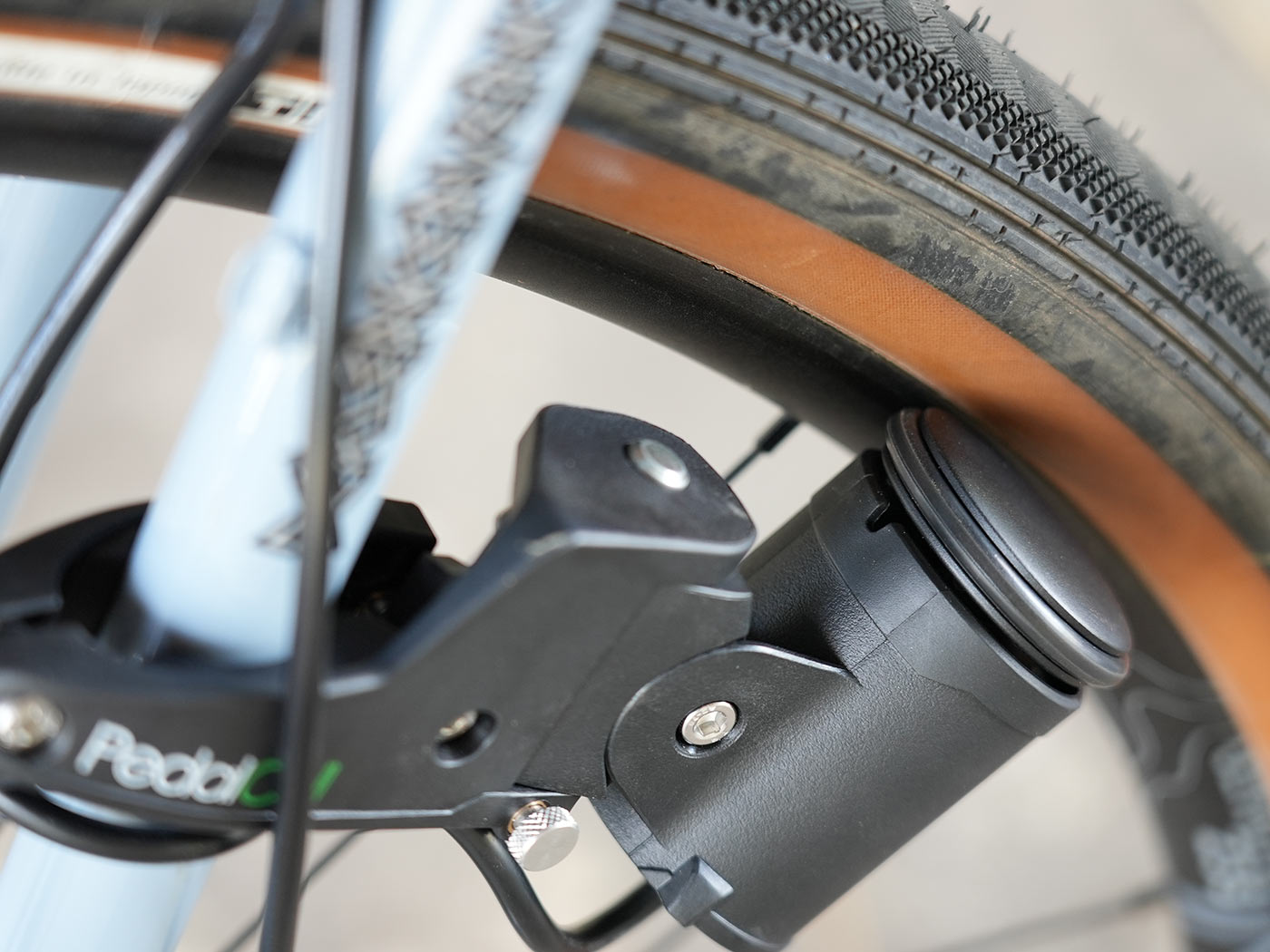
The product itself is a refreshingly simple affair: a dynamo which you can clamp on your fork or your chainstay, and a box which I elected to mount on my handlebars (though the cable is long enough to allow more creative setup…or just stuff it into a top tube or handlebar bag to hide it).
Commuters, rejoice! Set-up is easy, intuitive, and took me five minutes the first time around, and maybe 1-2 minutes each time after that. The clamp comes with various size rubber adapters to ensure a perfect fit. Rough asphalt, bumpy gravel, poorly-negotiated jumps… the clamp never came loose.
Everything here feels solid, with a reassuring, professional quality to it. Although it’s not advertised as waterproof, the system easily handled rain, mud, sleet, and splashes.
The wheel that drives the generator is surrounded by a rubber O-ring, which needs only a tiny bit of real estate on your rims (4-5 millimeters) and worked well on my very rounded disc-brake rims.
That said, they only recommend it for use on alloy rims, not on carbon rims. But, you can use it on standard suspension forks as long as it will mount on the lowers…not (obviously) on the stanchions. It won’t work on inverted leg forks, either.
Ride & performance review
Is it pretty? That will depend on your aesthetic sensibility. Does it work? Absolutely.
The spring keeps the dynamo firmly pressed against the rim, and a slight buzz reminds you it’s on. I did notice a bit of added rolling resistance, but there’s a locking mechanism designed to keep the dynamo off the rim when you don’t need the power.
The handlebar-mounted box boasts two USB-C ports (one is a 3W “priority” port, great for your lights, the other is a high-power 12W that requires a few seconds to get going).
I am not an engineer and I am a bad mechanic, so I won’t go into the details of the supercapacitor technology. The PedalCell website can do that for you, but suffice to say any dynamo-powered light will be almost instantly fully bright as soon as you start moving, and retain power for a little while at stop lights.
Suffice it to say that the device offers a stable, fast, and very powerful charge, no matter the temperatures, and maybe more importantly, it does so even if you’re not fast… On each outing, my cell phone was running with the screen on and charged noticeably faster than with my riding buddy’s Sun SON [sic] dynamo hub.
The PedalCell system also beats the portable USB power banks I used to carry (well, I can still carry them, but now they can be recharged while I ride…).
Who is it for?
I have lusted after Dynamo hubs for a long time, and yes, they are arguably sleeker. But the price (hub, rim, build) remains prohibitive for me. If you have several bikes with different sized-wheels, you cannot simply swap your dynamo-wheelset from one bike to another. And there’s the weight penalty of pushing that heavier hub even when you don’t need it.
Unless you have internal routing, the cables are exposed, and a dynamo hub’s wires are noticeably less sturdy than the cable used by PedalCell. If you’re in the market for more power for your gadgets, supercapacitor technology is undeniably the clear winner (check out the nifty graphs on their website).
If you’re a go-fast, KOM chaser on a full carbon road bike, then you’re probably not interested in either Dynamo hubs or PedalCell anyway. But if you’re a year-round commuter, a weekend-warrior perpetually let down by USB batteries, or a long-distance bikepacker with lots of power-hungry devices, PedalCell is a versatile, long-lasting and relatively affordable solution worth your consideration.
